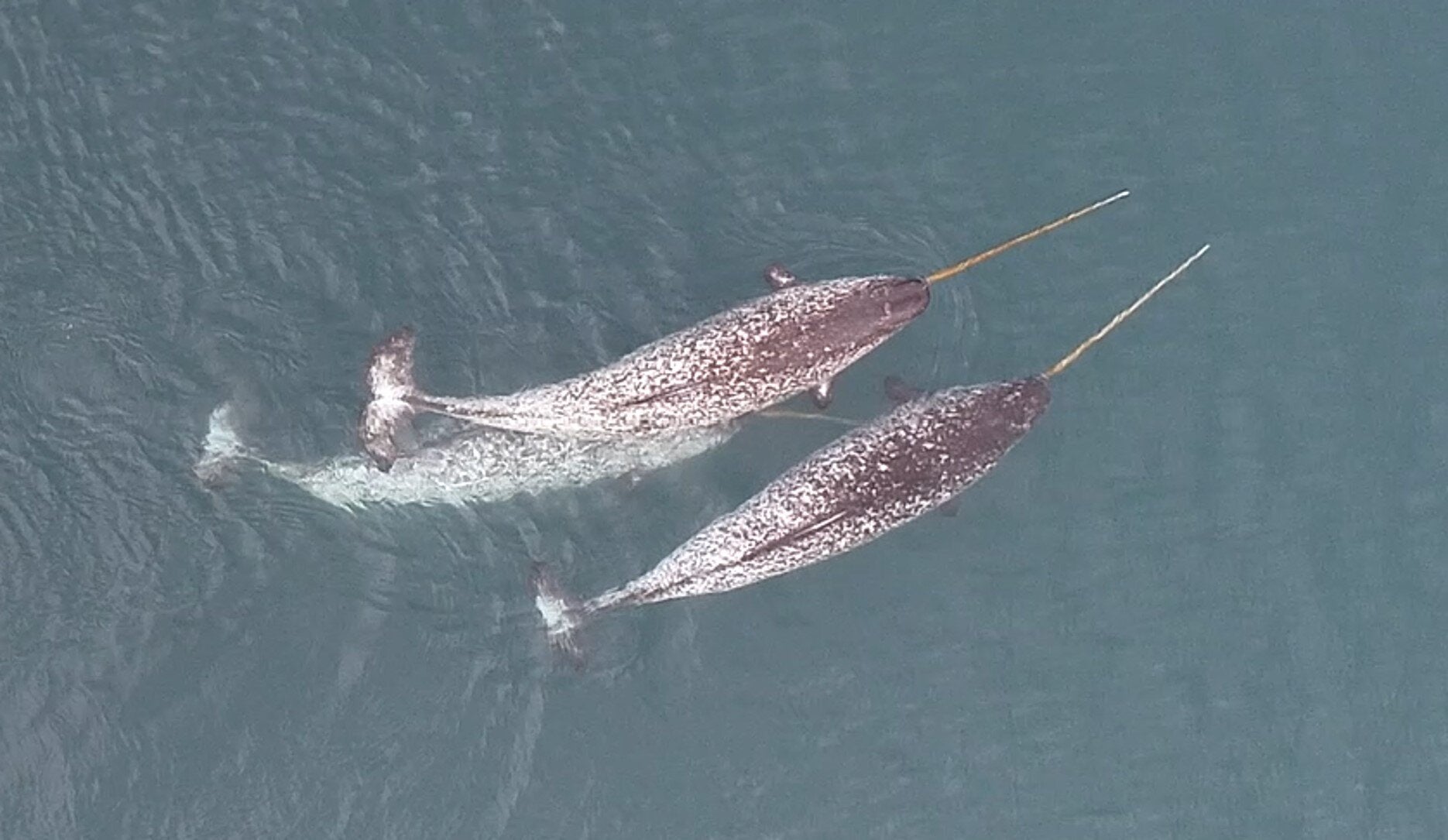Drone footage has captured narwhals using their iconic long tusks to engage in previously unseen behaviour, including to play with their food.
The Arctic whale species, an inspiration for mythical beasts such as the unicorn, have tusks that grow up to 10m, especially in males.
However, the many functions of the long tusks are debated as very few researchers have observed these elusive animals use their tusks in the wild.
Previous studies have revealed that the spiralling tusks are the mammal’s canine teeth that are pushed out through their lips.
Research has also hinted that the tusk could be a sensory organ by itself, helping the whales measure the salt concentration of water.

Now a new study, published in the journal Frontiers in Marine Science, scientists provide the first evidence of narwhals using their tusks to probe, manipulate and influence the behaviour of the fish Arctic char (Salvelinus alpinus).
“This unique study where we set up a remote field camp and spent time filming narwhals with drones is yielding many interesting insights and is providing a bird’s eye view of their behaviour that we have never seen before,” said Cortney Watt, an author of the study.
“Our observations provide clear evidence of narwhals chasing fish and using their tusks to interact directly with the fish and to influence the fish’s behaviour,” said Greg O’Corry-Crowe, another author of the study.
The marine mammals used remarkable dexterity in using their tusk with regular adjustments to track their moving target, scientists say.
They used the tip of their tusk to interrogate and manipulate fish with brief contact, eliciting a response from the fish, the study noted.
Narwhals were also spotted delivering sufficient force with their tusks to stun and possibly kill the fish.
Overall, researchers captured 17 distinct tusk-use behaviours among narwhals, shedding light on their dynamics with their prey and with other competitors like birds.
One of the drone footage shows evidence of what seems like playful behaviour by narwhals in a changing Arctic.
The footage hold clues to better understanding social learning, instruction, and personality differences among individual narwhals, scientists say.
They also document for the first time complex interactions between narwhals, fish and birds.
One of these interactions includes what scientists call an attempted kleptoparasitism, or a “food thief” situation between narwhals and gulls.
Researchers suspect changing environmental conditions in the Arctic might be introducing such new interspecies encounters.
“Narwhals are known for their ‘tusking’ behaviour, where two or more of them simultaneously raise their tusks almost vertically out of the water, crossing them in what may be a ritualistic behaviour to assess a potential opponent’s qualities or to display those qualities to potential mates,” Dr O’Corry-Crowe said.
“But now we know that narwhal tusks have other uses, some quite unexpected, including foraging, exploration and play,” he said.


